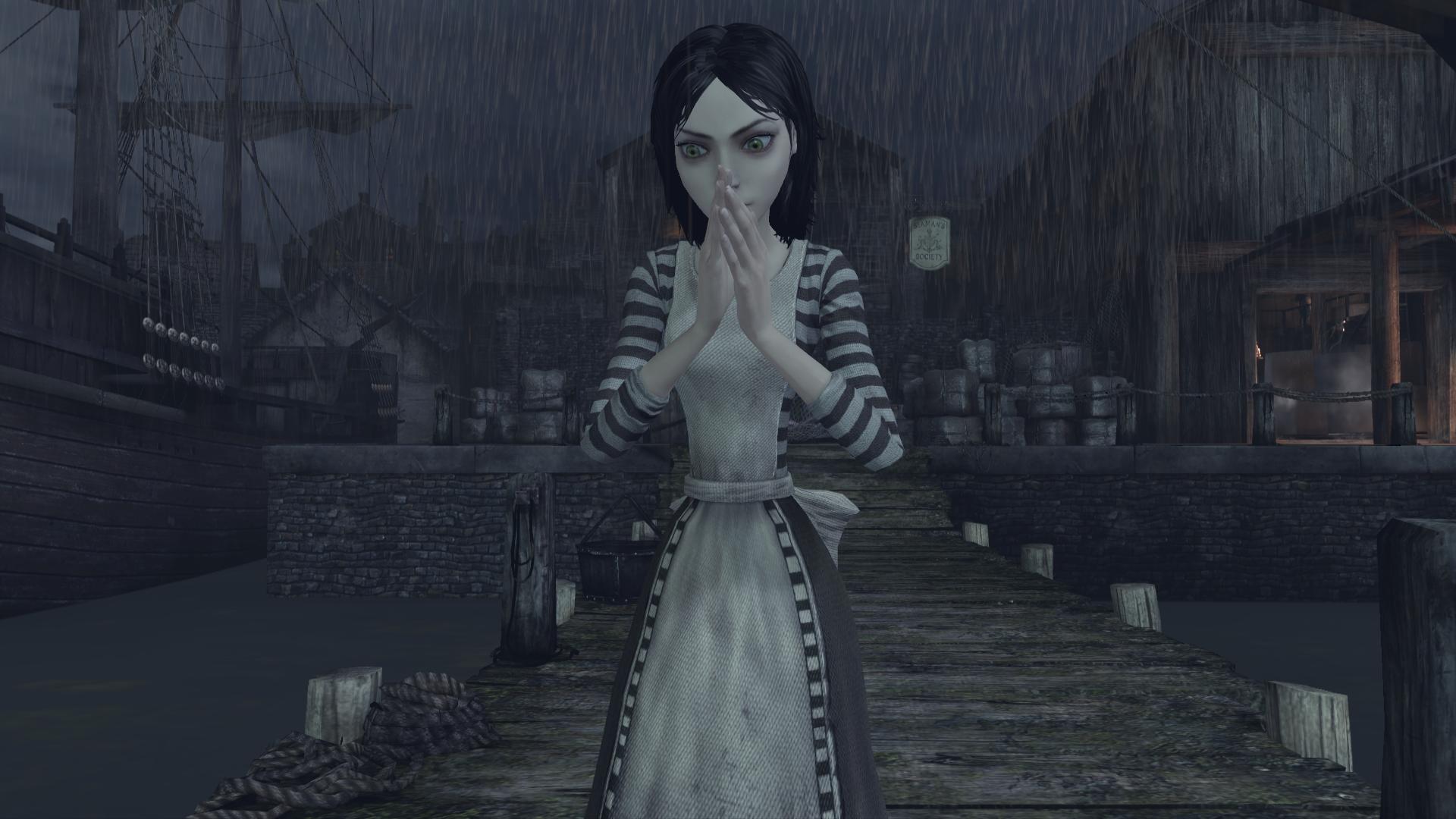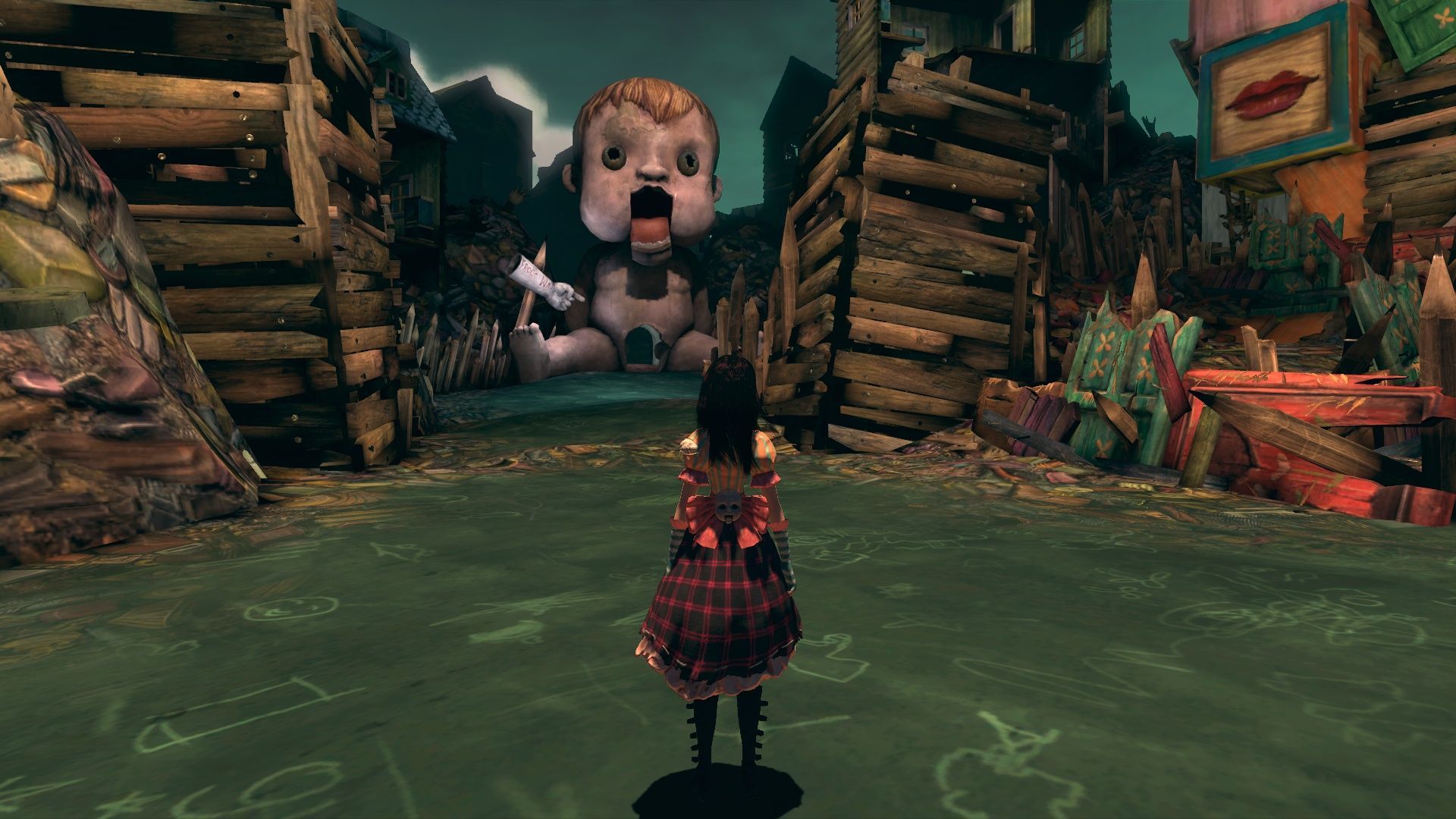Media - Videogame - Alice Madness Returns (2011)

Alice Madness Returns, although technically a sequel to American McGee's Alice (2000) game, acts as a standalone all on its own. The independent game deals with a disturbed version of Alice in Wonderland, where wonderland acts as the fragmented landscape of Alice's mind as she tries to remember the traumatic memories attached to the house fire that killed her parents.

The game starts in London, where a 19 year old Alice Liddell lives in an orphanage, gaining some much needed therapy from the in house Psychologist, Dr. Bumby. However, as the player listens to Dr. Bumby, it is clear that something more unsettling and sinister is lurking beneath the surface. Rather than trying to help Alice work through her trauma, Dr. Bumby is leading Alice into a hypnotic state to forget the memories of the house fire that killed her family. This mantra of forgetting is reiterated over and over, particularly through the games first chapter. At first I was worried that this characterization of the psychiatrist was a hamfisted attempt to show how psychology works, but it really is a clue to the players that Dr. Bumby is not the good intentioned psychiatrist he claims to be: He is, ultimately, the true villain of the piece, having set the fire at Alice's house to cover up the assault and murder of her older sister, Elizabeth.
The most obvious example of Alice's PTSD is a new form Alice can take called her Hysteria Form. Harking back to how PTSD would be explained away in a woman during the 19th century, Alice's Hysteria form acts as a life saving mechanic. When Alice becomes too low on health, her Hysteria Mode can be triggered by the player. During this period (which lasts only a specific length of time) the player can no longer be hurt and is able to deal massive damage to opponents using Alice's attacks. However, while triggered, enemies will drop no items, bonuses or health that allow you to upgrade Alice's weapons. Visually, the world becomes more muted, unsaturated (aside from the color red) and a fog rolls in making the world feel less real. This mechanic is a very interesting use of a trauma response, as it does give the player some benefits (power, invincibility) but it also keeps the player from progressing through the character upgrades when used too often. Alice will remain weak so long as she relies solely on her Hysteria Form to make it through battles.
With that in mind, the game is set up as a self exploration for Alice as she tries to recover the fragmented memories Bumby has tried to make her forget. From the second Alice finds herself in Wonderland, it is clearly already more sinister than it should be. Things are not just perculiar but sinister, and Alice must immediately pick up the Vorpal Blade (A massive carving knife) and slice and dice her way through Wonderland.

Soon enough it becomes clear that the thing disfuguring and destroying Wonderland (and Alice's mind) is the Looking Glass Train, which appears as a Victorian house on Fire fused with a train car. The train blast through the environment causing chaos and destruction in its wake. This is, of course, the Traumatic event that Alice is trying to reach and understand. She begins asking the residents of Wonderland for their help in stopping the Trauma Train rampaging through the world. From here on out, each chapter themes itself to some element of Alice's trauma, and Alice becomes frustrated at every turn as none of those she asks help from prove to be very useful. What is useful, however, are the fragmented memories that Alice picks up along the way. Sometimes the meaning of these memories is obvious - sometimes it is not. Some of these fragments seem happy or positive, such as her father's love of photography, or the time her sister tried smoking a cigarrette and telling Alice what it was like.
These audio clips, along side the visible world of Wonderland, create a much more successful view of her trauma. Teapots litter the landscape of Wonderland, as do Pig Snouts, Sea Shells and Stars. These odd and innocuous forms tell the player more about Alice's triggers than the direct narrative could on its own. There is an entire level that is devoted to discussing child sex trafficking that is formed using extremely unsettling toys that needs no further explanation than the visual elements in the environment.

Overall, I think the most interesting part of Alice Madness Returns, and its approach to explaining trauma, has to do with the in your face, out of place representations of the triggers. I had been considering my narrative to be filled with mostly realistic looking environments, but this game has me wondering if maybe adding in some more artificial elements like this could be a cool and interesting way to allow themes to come across in my project without trying to write it directly into the narrative.

Comments
Post a Comment